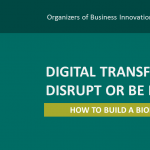Blitzscaling at Scale: Or, Applying Blitzscaling to Large, Post-Founder Corporations
Author: Dr. John Sviokla
God made the world in seven days, but he did not have an installed base
– Anonymous
One of the most frustrating things to watch is when senior executives from large companies desperate for new growth listen to advice from pundits on how to create new and successful innovations by learning from startups. If we hear one more pundit giving “HADIT” advice e.g. “How Apple Does IT”, – we’re going to throw up. It is like when the World Economic Forum puts the US as the fourth most innovative country in the world behind Switzerland, Sweden and Singapore – each of which are not even as big as New York; it’s a silly comparison. Such HADIT advice is incomplete at best – because it ignores the political and organizational realities of any established company – and at worst, it is simply innovation porn – e.g. a voyeuristic stimulant with no healthy reality.

In addition, the hyper-rational advice on transformation is just as useless. Finding blue oceans or unserved markets in new domains and using those new segments to transform existing businesses is only successful in firms who have not been committed to strategic marketing. Any reasonably successful executive team has looked for product, channel, geographic, technology, and customer adjacencies. When IBM reinvigorated itself under Lou Gerstner it added more services to a company that already sold services to customer and channel partners it was already using. It was a very successful execution of strategic adjacencies. If these strategies reinvigorate growth – great, but it’s just executing on what executive teams are already paid for. This is why studies show that the vast majority, over 80%, of companies do not change until they stall – and then only a minority of those make it through the transformation post stall.
Blitzscaling In An Existing Organization Post Founder
We are not sure that we have the answer, but we have some ideas that we believe at least acknowledge some of the political and economic realities of a successful, existing organization and the natural tension such organizations have with blitzscaling growth – and we share some design ideas on how you might create institutional innovation at scale.
We believe we need to acknowledge at least two truths of large organizations:
- A successful founder can shape the business model, product/service offering, culture, incentives in a way that no successor can match unless he or she is a majority owner of a private company – and even then it is tough. Put another way, only Steve Jobs, after he saved Apple could make a successful argument to the board for Apple to enter the smartphone business which was dominated by powerful channel partners (the carriers), foreign manufacturers (Norwegians, Germans, Koreans and Chinese) and offer a phone which was 2-5X as expensive as the existing phones. At the time the iMac was selling like crazy and had almost 0% corporate penetration. A non-founder CEO would have been told no! No iPhone.
- The core expertise of any large organization is to decrease variance and increase the predictability of everything. Product creation, revenue forecast, earnings achievement, staff advancement – everything is aimed at being more predictable. This means the almost all (and there are a few exceptions) senior executives at Global 500 companies are smart, affable, hard-working, mentally tough and politically ruthless when they have to be. With their products and services, they compete outside the organization, but with their careers, they compete inside. They got to the top because they could predictably deliver and outcompete their peers. A perfect innovation for them is one that is material to the business, is growing fast, and they can take ownership of it just when all the risk has been removed. They may talk about failing fast, tolerating experimentation, learning from their mistakes, but it is the rare senior executive who really takes any material risks with the business (e.g. more than 10% of a cost or revenue base) in practice and the rare organization that rewards such risk-taking – with the exception of mergers, acquisitions, and divestitures – which are “acceptable bets”.
If you want to learn how to drive a digital transformation & scale it up, sign up for a business innovation webinar on Monday, May 13 at 12:00 PM EDT (9:00 AM PDT)
https://


